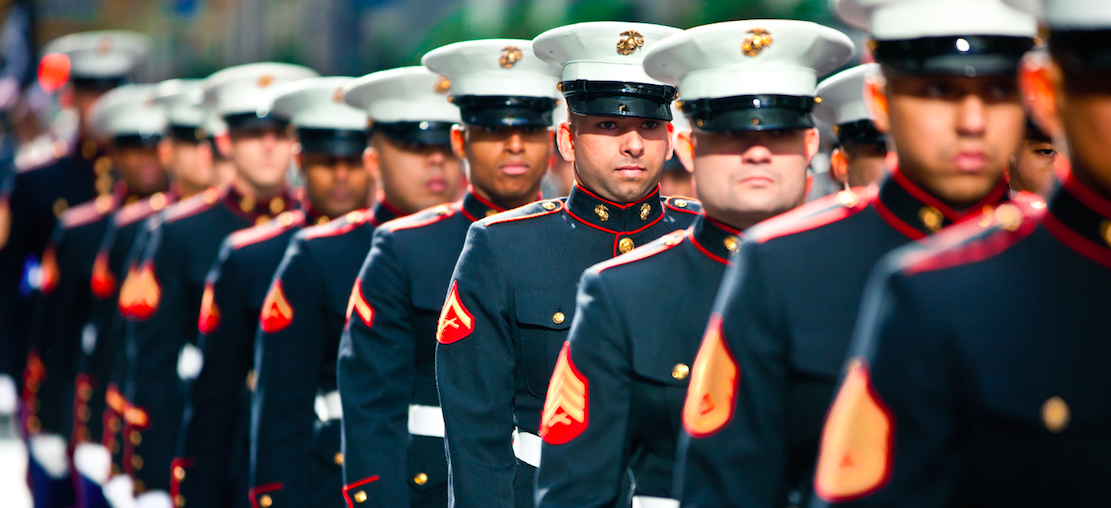With the US Military entering its 14th year of operations in Afghanistan and expanding their presence in Iraq , there appears no end to international conflict and the reality of a large standing military. Each of these strategic security decisions present a lifetime commitment to those of our country’s men and women who answer the nation’s call. The support shown to America’s veterans is at one of its highest points in our history. In the last few years a tendency has developed for political leaders, researchers, and nonprofit organizations to release proposals and results during the week surrounding Veterans Day. Two weeks ago was no different, with the added component of Presidential candidates taking positions on veterans policy for the first time in this election cycle. However whether any of these proposals or survey results are acted upon and result in meaningful change in the lives of our nation’s veterans, remains to be seen.
There are approximately 22 million living American veterans today. The average American veteran is white, in their 60s, with a high school degree. Even with our continued conflicts, the number of overall veterans continues to decline as we operate with the smallest military since before World War II. Our World War I veterans have already passed on and our World War II veterans are quickly following. As there are fewer veterans in the population and these veterans are increasingly all-volunteer, it is worth discussing whether the Department of Veterans Affairs (VA), which is the second largest government agency in terms of personnel, will retain its current composition.
One major policy question in recent years is the role of government in ensuring quality employment for transitioning service members. One of the best ways to potentially decrease the costs associated with supporting our veterans is to successfully reintegrate them into society after they leave the service. The latest unemployment report from the Department of Labor reports veteran unemployment is at its lowest point since 2008 and remained lower than non-veteran unemployment for the past 23 weeks. Yet, a report released this week from the Center for a New American Security identified concerns over underemployment in the veteran community. This focus was reiterated by the political director for the Iraq and Afghanistan Veterans of America (IAVA), Bill Rausch, in an interview on CSPAN. Mr. Rausch identified a need to find veterans the right career rather than the right job, as transitioning servicemembers often change jobs multiple times within their first 3-5 years in the civilian job market. The Department of Defense (DoD) continues to improve its transition assistance programs, thanks to directed guidance from Congress and the personal influence of a number of senior leaders who recently left the service. However, the DoD is the largest department in government and its impact at the lowest level is greatly influenced by individual implementers at installations in every clime and corner of our nation and its allies.
My research, which focused on the distance veterans settle from a military installation and its impact on community participation, showed some potential benefit to be gained by encouraging transitioning service members to settle further from an installation as a veteran. This focus on getting veterans to a location rather than to a job fits well with the underemployment concern discussed this week. However, my research was limited in its effectiveness due to the lack of specificity used by the Census Bureau’s Current Population Survey. This survey is used by a number of government agencies to characterize the veteran population as well. While the survey identifies veterans by time of service (WWI, WWII, Korea, Vietnam, etc.) it fails to identify important characteristics which could explain much about the individuals involved. These characteristics include branch of service (Army, Navy, Air Force, Marines), job within the military, component of service (Active Duty, Reserve, National Guard), and rank achieved. With increased details in our existing survey data on Americans, an improved understanding could improve the potential success of veterans within their communities.
Collaboration between the government, educational institutions, and non-profit organizations on veteran data is already underway. Last year the Student Veterans of America worked with the Veterans Benefit Administration (a subordinate of the VA) and the National Student Clearinghouse to review GI Bill expenditures against degrees granted. This project was expanded for this year with the goal of creating the National Veteran Education Success Tracker. Similar projects could be developed between an interested non-profit and the DoD and Department of Labor (DOL) to determine which military occupations result in high employment or unemployment in order to focus the efforts of transition assistance. In a similar vein to my research, it could identify locations where jobs in certain occupations are likely to be available. The ability to share this information with both transitioning servicemembers and DOL counselors supporting veterans across the nation might be more beneficial than many programs already provided by the government.
The reality is that there are plenty of good people with good ideas working on veterans policy in America. The time to craft and begin implementation of long term policy improvements is now. The Congress continues to show overwhelming support for most reasonable proposals which reach their halls; VA expenditures have doubled since the year 2000 as a result. Our political leaders must identify strong coordinators and policy analysts to implement and monitor these ideas over an extended period if Veterans Week is to become just another week among the 51 others our government demonstrates progress in providing for those who chose to serve. If we remain in a situation where government spending without proper oversight remains the standard, you can expect to see great ideas recycled every November.
